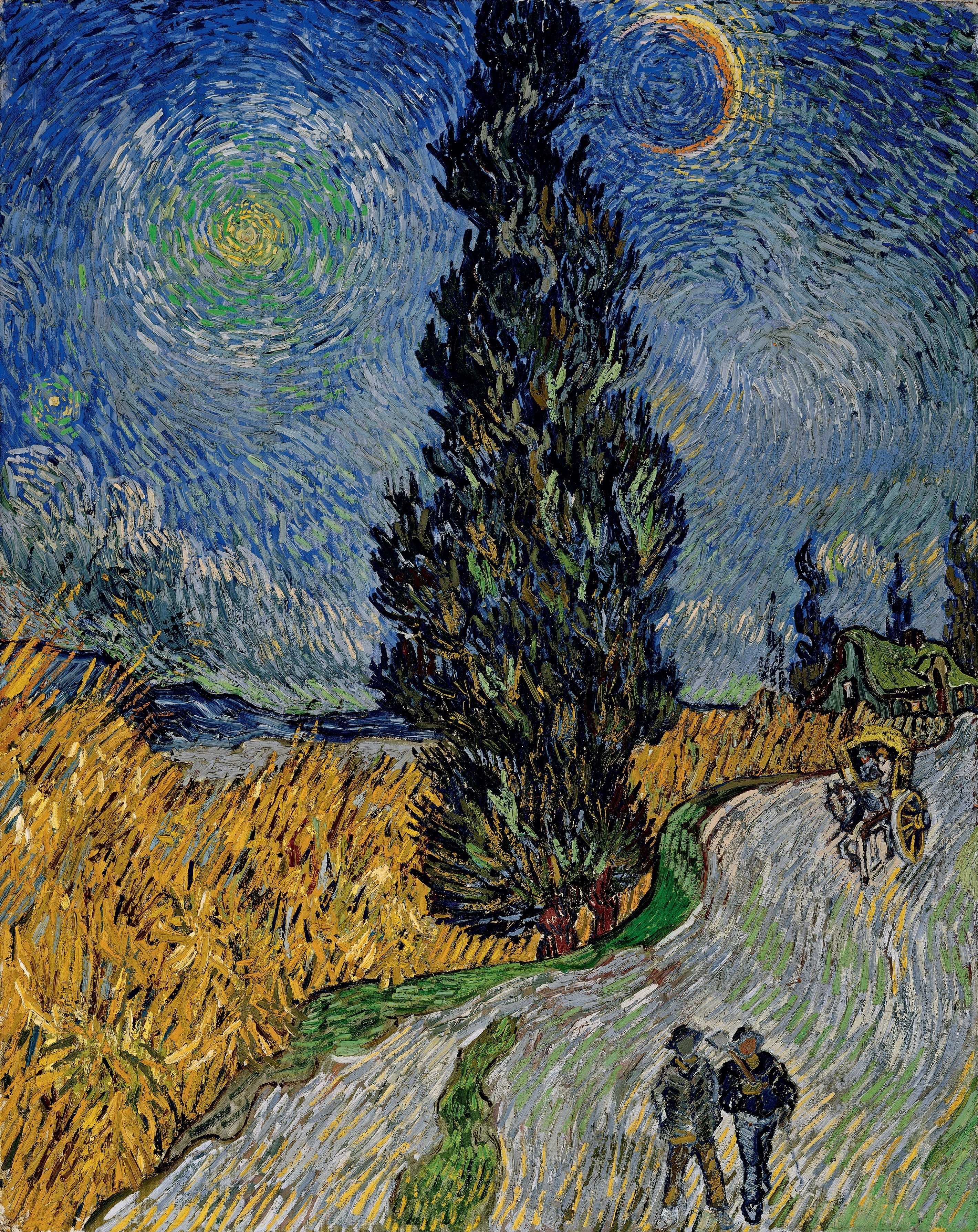Table of Contents
- Exploring the Evolving Landscape of Modern Art Movements
- Key Characteristics That Define Modern Art Expressions
- Influential Artists Who Shaped Contemporary Art Narratives
- The Role of Technology in Transforming Artistic Practices
- Navigating the Future: Recommendations for Engaging with Modern Art
- Q&A
- Closing Remarks
Exploring the Evolving Landscape of Modern Art Movements
The realm of contemporary visual expression is a dynamic arena where traditional boundaries are continuously challenged and redefined. Artists today draw inspiration from an array of sources, marrying technology with age-old techniques to create pieces that resonate with the complexities of the modern age. As our world grapples with rapid shifts in culture, politics, and technology, art movements have emerged that reflect these transformations. This fusion of ideas often leads to innovative forms such as digital art, installation pieces, and performance art, bridging the gap between artist and audience in unprecedented ways.
Among the most influential movements currently making waves are Street Art, which thrives in urban landscapes, and Post-Internet Art, which incorporates the nuances of living in a digital society. Street artists like Banksy have turned public spaces into politically charged canvases, fueling discussions on social issues while challenging conventional art consumption. Meanwhile, pioneers in Post-Internet Art create works that acknowledge and critique the omnipresence of the internet, compelling viewers to engage with themes of identity, community, and the nature of digital existence.
Moreover, the rise of Eco Art showcases artists’ commitment to environmentalism, often utilizing sustainable materials and practices to highlight ecological issues. This movement not only raises awareness but also encourages viewers to rethink their relationship with the planet. The following table illustrates some key contemporary art movements alongside their defining characteristics:
| Art Movement | Key Characteristics |
|---|---|
| Street Art | Public spaces, social commentary, diverse styles |
| Post-Internet Art | Digital influence, critique of internet culture, experimental |
| Eco Art | Sustainable practices, environmental themes, community focus |


Key Characteristics That Define Modern Art Expressions
One of the most striking elements of contemporary artistic expressions is their focus on abstraction. Artists today often prioritize emotional resonance over realistic representation, embracing a looser, more subjective interpretation of the world. This shift allows creators to explore a vast array of textures, colors, and forms to communicate ideas or feelings that might be difficult to articulate through traditional means. Such abstraction is evident in works that range from bold and chaotic to minimalistic, encouraging viewers to engage with art on a personal level.
Another defining characteristic is the integration of technology into the artistic process. Modern artists utilize digital tools and multimedia to expand their creative boundaries. This can manifest in various ways, including digital painting, video installations, and interactive art pieces. The fusion of technology with traditional techniques not only broadens the scope of what can be created but also reflects contemporary society’s pervasive relationship with digital culture. This marriage of mediums invites dialogue about the nature of art in an ever-evolving, tech-driven landscape.
Additionally, there is a strong emphasis on social commentary within modern art. Many artists leverage their work to address pressing social issues such as identity, inequality, and environmental concerns. This social engagement transforms art into a platform for activism, prompting conversation and sometimes controversy. By tackling such themes, modern artists strive to provoke thought, challenge norms, and inspire change, reinforcing the idea that art is not just for aesthetic pleasure but also a powerful medium for societal reflection and progress.


Influential Artists Who Shaped Contemporary Art Narratives
Contemporary art has been profoundly influenced by a range of visionary artists, each contributing uniquely to its ever-evolving narrative. Among these artists, Jeff Koons stands out with his provocative sculptures that challenge the boundaries between high art and consumer culture. His use of kitsch and everyday objects in his work invites viewers to reconsider their perceptions of taste and value. Likewise, Damien Hirst has left an indelible mark with his conceptually charged pieces, such as “The Physical Impossibility of Death in the Mind of Someone Living,” which uses a preserved shark to explore themes of mortality and the nature of existence.
Furthermore, Yayoi Kusama revolutionized the art scene with her immersive installations and iconic polka dot patterns, creating spaces where viewers experience a sense of infinite connection and obsession. Her work embodies the blend of personal narrative and collective experience, inviting audiences into her unique psychological landscape. Meanwhile, Banksy, the elusive street artist, has redefined public art through his socially critical graffiti that critiques societal norms and political issues. His ability to spark conversation and awareness through simple yet poignant imagery has cemented his status as a cultural provocateur.
These artists not only challenge traditional aesthetics but also shape discourse across various mediums. Below is a brief overview of their contributions:
| Artist | Key Work | Influence |
|---|---|---|
| Jeff Koons | Balloon Dog | Redefines consumerism in art |
| Damien Hirst | The Physical Impossibility of Death… | Explores themes of mortality |
| Yayoi Kusama | Infinity Mirrored Room | Encapsulates obsession and infinity |
| Banksy | Girl with a Balloon | Critiques social issues through street art |


The Role of Technology in Transforming Artistic Practices
In recent years, technology has become a pivotal force in the evolution of artistic practices, bridging the gap between traditional mediums and contemporary expressions. Artists now harness innovative tools that expand their creative horizons, allowing imagination to flourish in unprecedented ways. The integration of digital platforms and software presents a myriad of opportunities, where concepts can be manifested in real-time, fostering collaboration and experimentation. As a result, galleries and exhibitions have begun to embrace interactive installations, creating immersive environments that engage audiences on a multisensory level.
One transformative aspect of technology is its ability to democratize the art world. Online platforms and social media networks allow artists to showcase their work globally, bypassing traditional gatekeeping associated with galleries and curators. This newfound accessibility has led to the emergence of diverse voices and narratives within artistic discourse, enriching the cultural landscape. Some key technological advancements include:
- Virtual Reality (VR) – Enabling artists to create spaces that exist beyond physical constraints.
- Augmented Reality (AR) – Blending digital content with the real world, resulting in interactive art experiences.
- 3D Printing – Allowing for the rapid prototyping of sculptures and mixed-media works.
The rise of data-driven art further illustrates how technology shapes modern artistic practices. Artists can manipulate vast datasets to create compelling visual narratives that reflect societal trends and human experiences. By employing algorithms and machine learning, they generate pieces that challenge traditional notions of authorship and creativity. Below is a brief overview of the impact of technology on various art forms:
| Art Form | Technological Influence |
|---|---|
| Painting | Digital canvases and tools such as Procreate and Photoshop allow for limitless experimentation. |
| Sculpture | 3D modeling software enhances design precision and allows for intricate creation processes. |
| Performance Art | Live streaming and social media engagement create a wider audience and real-time interaction. |
the interaction between technology and artistic practice not only reshapes how art is created but also how it is experienced and consumed. As these technological advancements continue to evolve, they promise to push the boundaries of creativity, inviting artists and audiences alike to rethink the possibilities of art in the modern world.


Navigating the Future: Recommendations for Engaging with Modern Art
Engaging with modern art can be a transformative experience that invites viewers to challenge their perceptions and expand their understanding of creativity. One effective strategy for deepening your appreciation is to explore the context in which modern artworks are created. Understanding the social, political, and technological influences that shaped various movements provides essential insights. Research the artist’s background and the historical period they belong to; this context not only enriches your viewing experience but also fosters a connection with the artwork itself.
Another key approach is to attend exhibitions and participate in discussions. Many galleries host events that encourage visitor interaction with the art and artists. Take advantage of guided tours, workshops, or artist talks to engage with the material on a more profound level. Additionally, joining online forums or local art clubs allows for shared experiences and diverse interpretations, fostering a community around modern art. Remember that dialogue can transform individual reflections into a collective cultural understanding.
don’t shy away from experimenting with your interpretation. Modern art often defies traditional notions of beauty and meaning, encouraging personal reflections. As you explore various artworks, consider creating your own responses—whether through writing, sketching, or photography. This active engagement transforms passive viewing into a creative dialogue, allowing you to voice your impressions and emotions about the pieces. Embrace the ambiguity inherent in modern art, for it is often in this uncertainty that the most profound conversations arise.
